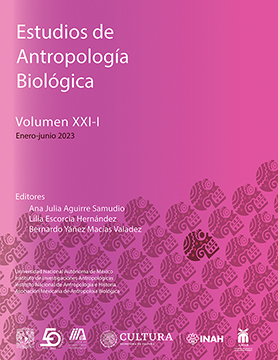The use of the tembetá in the central coast of Peru: the case of a fisherman of the Lima society, 4th-5th centuries AD.
DOI:
https://doi.org/10.22201/iia.14055066p.2023.84253Abstract
Many human skulls, male and female, adult and juvenile, found in the archeological site of the valley of Lurin (Cerro Punta Blanca), Rimac (Huallamarca), Chillon (Macas) and Chanchay (Sacachispa), central coast of Peru, show the ante-mortem intentional loss of central and lateral incisor, which constitutes a strong indicator of the use of tembetá, a facial ornament. Canines suffered great occlusal wear and the alveoli for incisor were reabsorbed due to the intentional tearing of the teeth. In the synphisial mandibular area, there are a smoothed area due to the use of tembetá. This practice in the central coast is a clear indicator of the strong bond with tribes from the Amazon region and Yungas farmers located on the slope of the occidental range of the Pacific.
Downloads
Downloads
Published
How to Cite
Issue
Section
License

http://creativecommons.org/licenses/by-nc-nd/4.0/


